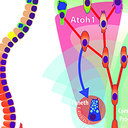Effect of exposure to volatile organic compounds (VOCs) on airway inflammatory response in mice.
Anahtar kelimeler
Öz
Volatile organic compounds (VOCs) are the main substances causing multiple chemical sensitivity reactions in human. The effects of single VOCs exposure on airway inflammatory responses in mice lung have been reported. Previous studies have demonstrated the role of reactive oxygen species (ROS) in lung inflammation induced by single VOCs inhalation. However, effects of VOCs exposure on NO signaling and neurological signaling pathways in airway remain less clear. We exposed male Kunming mice to filtered air (0) and four types of VOCs mixture (formaldehyde, benzene, toluene, and xylene) treated air. Group 1 is 1.0, 1.1, 2.0 and 2.0 mg/m(3), group 2 is 3.0, 3.3, 6.0 and 6.0 mg/m(3), group 3 is 5.0, 5.5, 10.0 and 10.0 mg/m(3), group 4 is 10.0, 11.0, 20.0 and 20.0 mg/m(3), which respectively corresponded to 10, 30, 50 and 100 times of indoor air quality standard in China 2 hr per day, 5 days per week, for 2 weeks in the whole body exposure chamber. One day following VOCs exposure, we collected lung, bronchoalveolar lavage fluid (BALF) from each mouse and examined oxidative stress markers, cellular infiltration and production of cytokines, neurotrophin and substance P. We found that VOCs exposure influenced significantly NOS activity, GSH, or IL-6 concentration. The number of total cells, macrophages and eosinophils increased significantly in group 4. In addition, the production of interferon-gamma (IFN-γ) and substance P were significantly decreased. In contrast, neurotrophin-3 production in BALF was significantly increased in group 3 and 4. Our findings suggest that NO signaling pathways may induce airway inflammatory in short term VOCs exposure mice and the airway inflammatory response may be modulated by neurological signaling.



